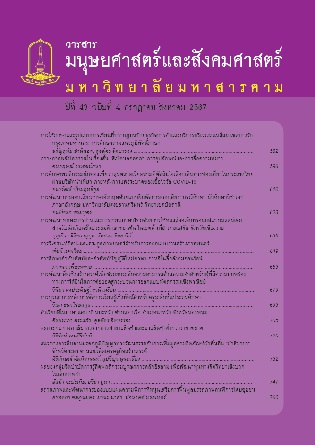การบูรณาการหลักการจัดการเรียนรู้เชิงทัศน์สำหรับครูระดับชั้นประถมศึกษา
Main Article Content
บทคัดย่อ
บทความนี้มีวัตถุประสงค์เพื่อนำเสนอการบูรณาการแนวคิดการเรียนรู้เชิงทัศน์สำหรับครูประถมศึกษา การใช้สัญลักษณ์เชิงภาพอย่างหลากหลาย ในการนำเสนอข้อมูลที่สอดคล้องกับธรรมชาติของผู้เรียนระดับประถมที่ยังไม่พัฒนาความคล่องแคล่วในการอ่านและเขียน ผู้สอนในฐานะของผู้จัดกระบวนการเรียนรู้จึงควรพิจารณาหลักการในการเลือกใช้เครื่องมือเชิงทัศน์ที่มีประสิทธิภาพ และเหมาะสมกับผู้เรียนเพื่อการเรียนรู้อย่างเต็มศักยภาพ ในบทความประกอบด้วย รูปแบบการเรียนรู้ ทฤษฎีสนับสนุนแนวทางการจัดการเรียนรู้ ความสำคัญ เครื่องมือ ขั้นตอนกระบวนการ และการบูรณาการหลักการทางศิลปะกับการสร้างเครื่องมือเชิงทัศน์สำหรับผู้เรียนระดับประถมศึกษา เพื่อเป็นแนวทางให้ครูผู้สอนได้นำไปปรับใช้ในการจัดการเรียนการสอน
Article Details
เอกสารอ้างอิง
ศักดิ์คเรศ ประกอบผล. (2563). การวิเคราะห์ผู้เรียน ลีลาการเรียนรู้. ครุศาสตร์สาร, 14(2), 1-14.
Daniels, S. (2018). Visual learning and teaching : an essential guide for educators k-8. Minneapolis: Free Spirit Publishing.
DiCarlo, S. E. (2009). Too much content, not enough thinking, and too little FUN! Advances in Physiology Education, 33(4), 257-264. doi:10.1152/advan.00075.2009
Fleming, N., & Baume, D. (2006). Learning styles again: VARKing up the right tree! Educational Developments, 7(4), 4-7.
Greenhoot, A. F., & Semb, P. A. (2008). Do illustrations enhance preschoolers’ memories for stories? Age-related change in the picture facilitation effect. Journal of Experimental Child Psychology, 99(4), 271-287. doi: 10.1016/j.jecp.2007.06.005
Hyerle, D. (2008). Visual tools for transforming information into knowledge. Thousand Oaks, CA: Corwin Press.
Liu, S. Y., Lee, Y. H., & Wang, M. Y. (2013). The effects of integrating interactive multimedia simulations into an elementary school science curriculum. Computers & Education, 60(1), 36-48.
Loch, B., Deiglmayr, A., & Moelter, M. J. (2019). Visual aesthetics in multimedia learning: An exploration of the influence of color and aesthetics on learning outcomes. Journal of Educational Computing Research, 57(7), 1575-1597.
Mayer, R. E. (2005). Cognitive theory of multimedia learning. In R. E. Mayer (Ed.), The Cambridge handbook of multimedia learning (pp. 31-48). UK: Cambridge University Press.
Mayer, R. E. (2009). Multimedia learning (2nd ed.). UK: Cambridge University Press.
Montgomery, Susan, M., & Linda, N. G. (1998). Students learning styles and their implication for teaching: Center for research on Learning and Teaching (Occasional Papers)(10).
Paivio, A. (2006). Mind and its evolution; a dual coding theoretical interpretation. Mahwah, NJ: Erlbaum.
Roam, D. (2013). The back of the napkin : solving problems and selling ideas with pictures. New York: Portfolio/Penguin.
Sweller, J., Ayres, P., & Kalyuga, S. (2011). Cognitive load theory. New York: Springer.
Tversky, B. (2010). Visualizing thought. Topics in Cognitive Science, 3(3), 499-535. doi:10.1111/j.1756-8765.2010.01113.x
Whitehouse, A. J. O., Maybery, M. T., & Durkin, K. (2006). The development of the picture-superiority effect. British Journal of Developmental Psychology, 24(4), 767-773. doi:10.1348/026151005X74153
Yildiz, E., & Moseley, C. (2019). The effects of visual learning strategies on students’ academic achievement: A meta-analysis. Journal of Visual Literacy, 38(3), 213-231.


